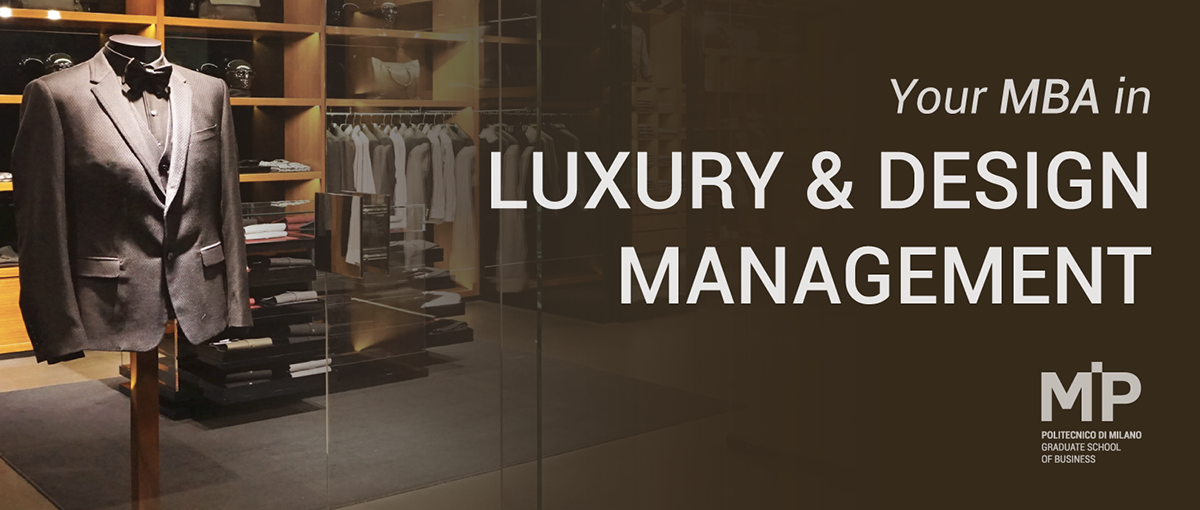#MIPexperience design Luxury mba
2020 Full Time MBA: the specialization in Luxury and Design Management
This MBA concentration at MIP aims to give students first-hand exposure to Italy’s luxury sector, with a study tour organized in important productive districts. The goal is to train professionals who are at ease working with the main trends underway.
Understanding the unique characteristics of the Made-in-Italy luxury sector, in order to be able to work in it by both innovating and preserving the tradition of historic brands: it’s the objective of the specialization in Luxury and Design Management, one of the four concentrations that since 2020 allow students in the Full Time MBA programme at MIP Politecnico di Milano to select an area of their choice to study in-depth. «Those who choose the luxury path will be able to discover the secrets of Italian companies, maybe still owned by the founding family, which however have been capable of becoming global leaders in the sector», explains Politecnico di Milano professor Alessandro Brun, Director of the Master in Global Luxury Management (MGLuxM) programme.
Luxury between strategy and operations
Specializations are paths that respond to specific needs of companies, which look for professionals trained in management, but also require more specific expertise. Luxury is one of these areas. «But luxury doesn’t only mean fashion», stresses Brun. «Instead, we mean everything that can be defined as high-end, in any sector. Sports cars, boating, jewellery, design, and furniture. And often foreign students are particularly interested in understanding the profound reasons for the global success of Made in Italy». The teaching methods of the Luxury and Design Management specialization have the same key characteristic of other concentrations: an eminently practical approach. «The first two weeks will have a more traditional start, even if bootcamp mode will already begin in this period, with projects assigned to students to carry out in close contact with company managers. In the first week, we’ll touch on strategic elements: what is luxury, who are the main players and how you compete in this sector, how you carry out a market analysis, how you establish positioning, up to the go-to-market strategy. In the second week, more operational issues are addressed: the sustainability of the supply chain, the different retail models, inventory management, the optimization of supply chain flows».
On the road to discover Made-in-Italy excellence
But it’s especially in the third week that all these elements are truly seen in action. «We have prepared what is a real study tour», says Brun, «a last week of bootcamp conceived and organized as a trip through the Italian productive landscape. We’ll set out from Milan by bus. The first stop will be in the Modena area, a territory with a great production of luxury autos; but there will also be an opportunity to visit a vinegar factory, since balsamic vinegar is also a product with luxury characteristics in the world of food. We’ll then move on to Tuscany, where there are equally interesting districts: leather goods and shoes come to mind. In these years, by the way, we have been working closely with Prada, Gucci, Ferragamo. We also couldn’t skip a few exclusive experiences tied to wine, all accompanied by managers who will talk to us about innovative ideas and business models».
The trends in luxury professions
The objective of this specialization is to contribute to moulding professionals that can take on not only the most traditional roles in the sector, but also those tied to rapidly developing trends. «Let’s think about the centrality of online sales channel in China. By now the use of the web to purchase luxury products is an accepted practice, but you need to be able to manage technological and customer journey elements to guarantee the customer the experience they are looking for», explains Brun. «Not less important is the issue of visibility and traceability: this includes communication, security, the fight against counterfeiting, and sustainability. Luxury companies must design global distribution chains that are a guarantee for purchases. A third issue then involves the challenge of innovation, to implement while maintaining ties to tradition: a luxury good must at the same time be perfectly modern and rich in history. Here you see the ability of those of who know how to manage innovation and design. And a single skill isn’t enough. Several ones are necessary, and you need to know how to integrate them», concludes Brun.






